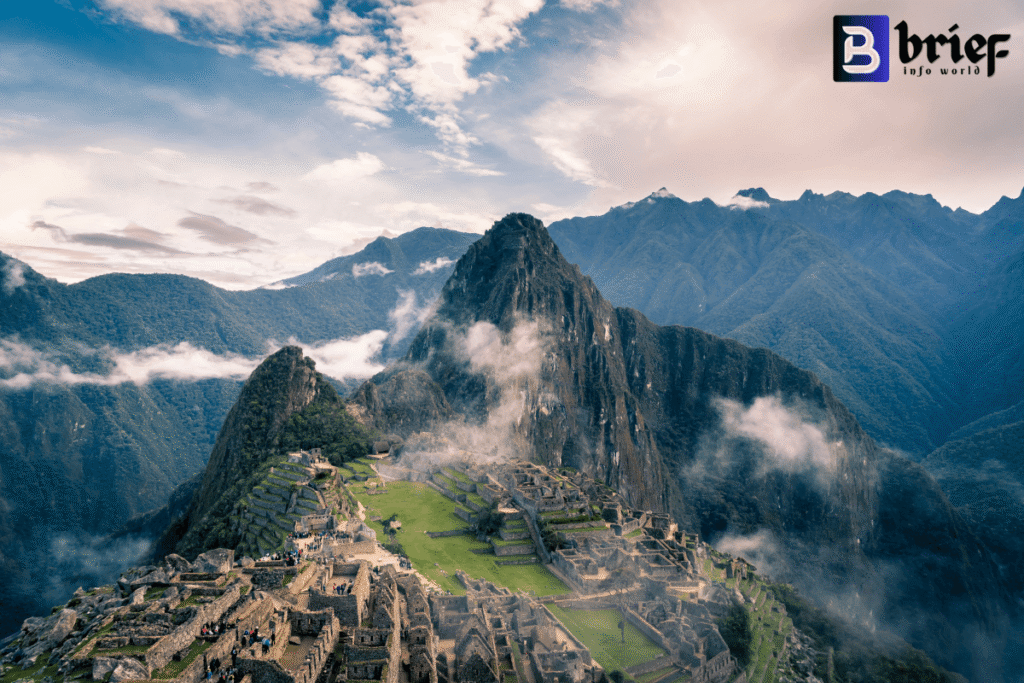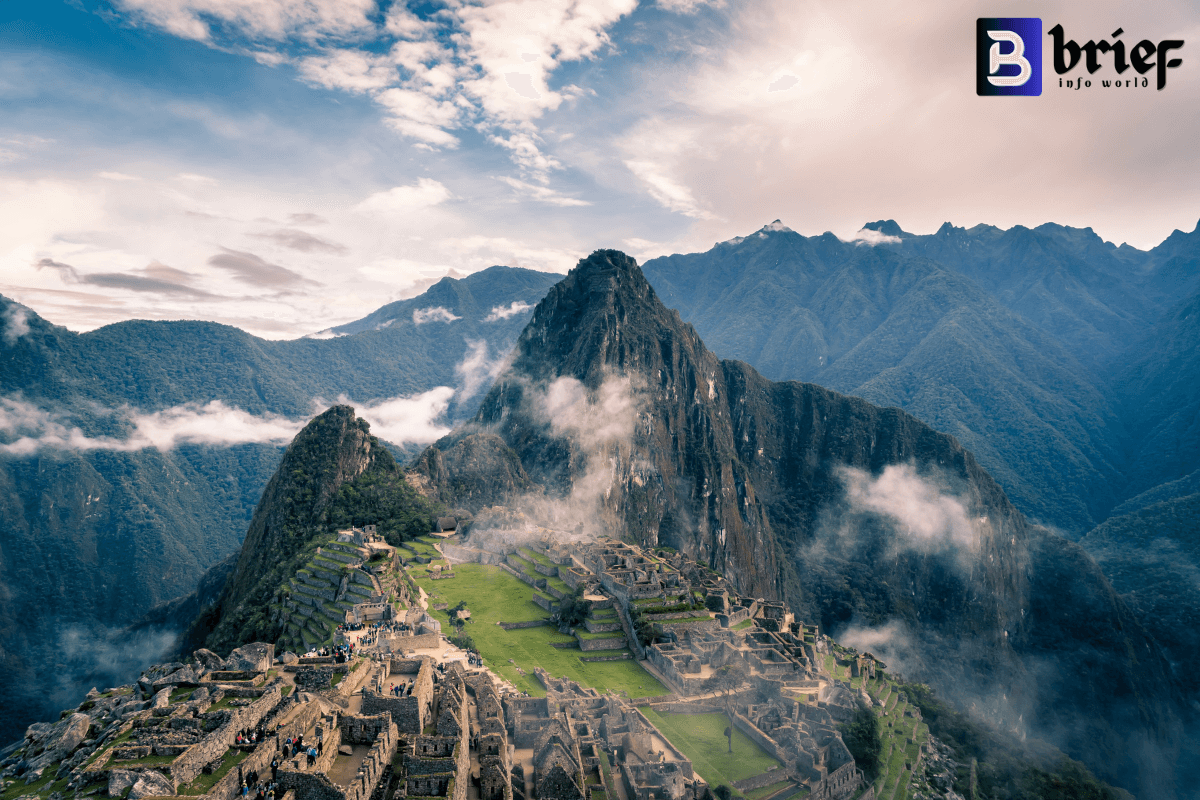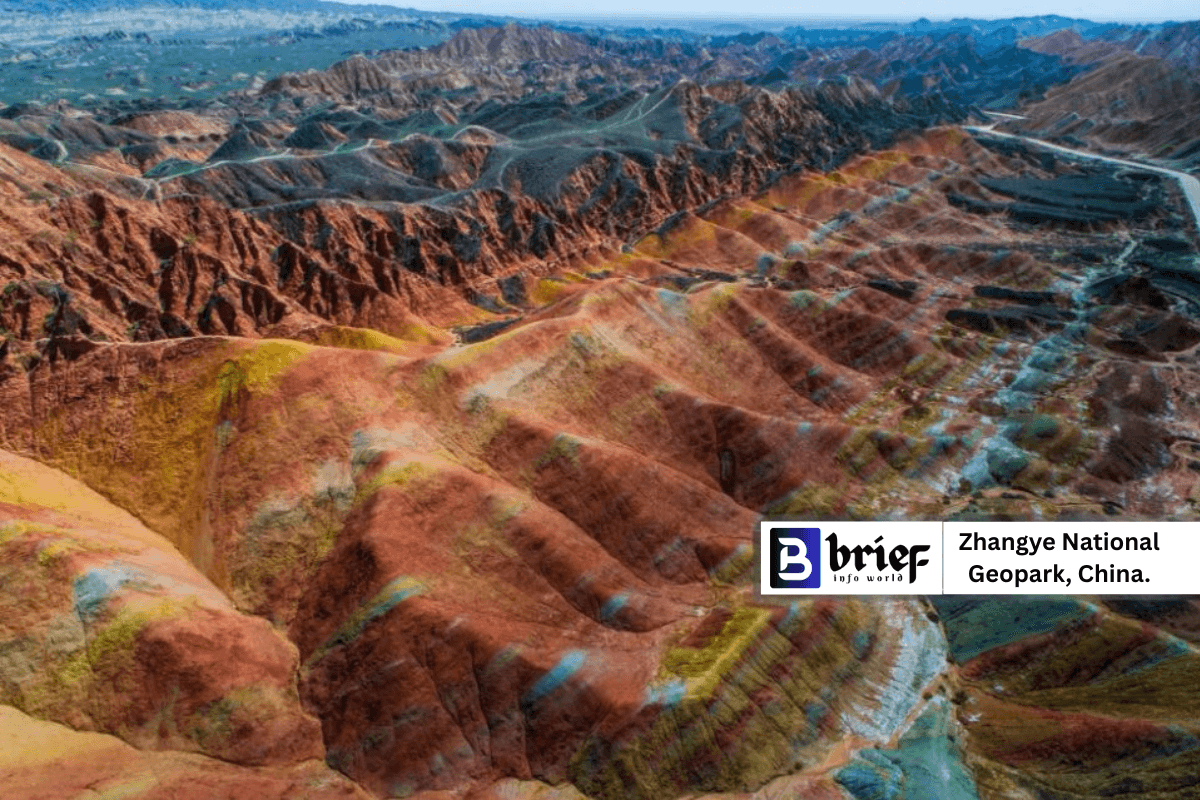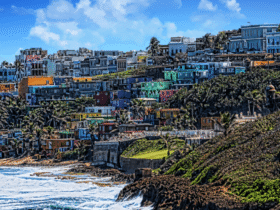
Machu Picchu Elevation: A location suspended between heaven and earth can be found high in the hazy peaks of the Peruvian Andes. Centuries after its construction, the ancient city of Machu Picchu, carved into the slope, still enthralls people and ignites their imaginations. For many travelers, visiting this iconic site is more than just checking a box on a bucket list—it’s a personal pilgrimage, a walk through time.
Machu Picchu was perhaps a royal estate or a hallowed holy destination for Inca rulers when it was constructed in the fifteenth century. Without mortar, stone terraces, temples, and palaces gently cling to the mountain ridge in this architectural wonder. Despite earthquakes and millennia of weather, each stone appears to tell the mysteries of the past.
It was kept secret until 1911 when American explorer Hiram Bingham brought it back into the public eye. But even then, Machu Picchu wasn’t really “discovered”—locals had known its existence for generations. They called it simply “Old Peak” or “Machu Picchu” in Quechua, the language of the Incas.
Machu Picchu Elevation: Why It Matters
Machu Picchu is perched high in the Andes Mountains of Peru. It is a breathtaking citadel famed for its archaeological wonder, and elevation plays a huge part in the experience.
- Elevation: ~2,430 m (7,970 ft) above sea level
- Context: Lower than Cusco (~3,400 m / 11,150 ft), but higher than many travelers anticipate.
Why does this matter? Altitude impacts oxygen availability, climatic conditions, and a visitor’s physical comfort. Even a moderate elevation can create noticeable differences in breathing, energy levels, and how one acclimatizes on-site.
1. The Numbers: Machu Picchu & Beyond
| Location | Elevation |
| Machu Picchu (citadel base) | ~2,430 m / 7,970 ft |
| Huayna Picchu (peak) | ~2,720 m / 8,924 ft |
| Machu Picchu Mountain peak | ~3,082 m / 10,111 ft |
| Cusco (regional hub) | ~3,400 m / 11,150 ft |
That puts the citadel significantly lower than Cusco, making it not just archaeologically, but also physiologically appealing.
2. The Human Story: Hiking High
Picture Maria, a lively visitor from Lima (sea‑level), stepping into Aguas Calientes. At nearly 2,500 m elevation, she immediately notices:
- Shortness of breath walking up just a few steps
- A subtle headache forming by lunchtime
- Slowed pace and heavier breathing
Yet, she soon adapts with small strategies—hydration, paced walks, coca tea—and by day two, she’s wandering the Temple of the Sun with wonder, breathing deeper but comfortably.
3. Altitude Effects & Prevention
At 2,430 m, Machu Picchu’s elevation can trigger Acute Mountain Sickness (AMS). Symptoms may include:
- Headache
- Nausea or light dizziness
- Fatigue
- Poor appetite or disturbed sleep
Tips to Prevent Altitude Sickness:
- Acclimatize gradually
Spend 1–3 days between 2,500–3,400 m (e.g., Sacred Valley, Cusco) before the citadel . - Stay hydrated, avoid alcohol, caffeine, salty or heavy meals
- Chew coca leaves or tea—a traditional remedy that boosts breathing comfort
- Use medication if needed
Acetazolamide (Diamox) or “Sorojchi pills”—start a day early; many travelers report smooth experiences - Take it easy
Rest when needed, breathe slowly, avoid rushing uphill - Oxygen support & Oxishot
Portable oxygen boosts are a popular quick aid; some hotels and clinics offer oxygen and oxygen‑rich rooms
4. Elevation’s Role in Weather & Climate
Elevation also defines temperature, weather patterns, and photography conditions:
- Cool mornings, warm midday sun, chilly evenings—be ready for wide temperature swings.
- Cloud cover and mist are common over the Urubamba River valley—ideal for foggy sunrise shots.
- UV radiation intensifies with altitude—so sunscreen, hats, and sunglasses are essential.
5. Trek Variation: Elevation Gaps Throughout
While Machu Picchu sits at ~2,430 m:
- Huayna Picchu adds ~290 m, creating steep, climber-focused ascent with inward thrill and thinner air.
- Machu Picchu Mountain peaks at ~3,082 m—close to Cusco elevations, demanding strong pace, stamina, and acclimatization
Machu Picchu: Complete Travel Guide
Explore the Lost City of the Incas
Machu Picchu isn’t just a destination—it’s an experience that stays with you long after the hike ends or the last photo is taken. This Incan citadel, one of the world’s most breathtaking archaeological monuments, lies tucked away in the misty mountains of Peru. Whether you’re a history buff, a thrill-seeking hiker, or a quiet soul searching for meaning, this guide will help you plan your perfect journey to Machu Picchu.
🗓️ Best Time to Visit
Dry Season (April – October):
- Best weather and clearest views.
- Peak tourist season: June to August.
- Perfect for hiking the Inca Trail.
Rainy Season (November – March):
- Fewer crowds, lush landscapes.
- Due to landslides, certain trails can be muddy or closed.
- February: Due to maintenance, the Inca Trail is closed.
⏱ Insider Tip: Try late April or early October for fewer crowds and pleasant weather.
🧭 How to Get There
- Fly into Cusco
- Most travelers start in Lima, Peru’s capital, then take a short flight (1.5 hours) to Cusco.
- Most travelers start in Lima, Peru’s capital, then take a short flight (1.5 hours) to Cusco.
- Get to Aguas Calientes
- Train: The most common choice. Inca Rail or PeruRail from Ollantaytambo or Cusco.
- Hike: Choose from several trekking routes (more below).
- Bus + Walk: Budget tourists frequently take the bus to the Hydroelectric Station and then walk for two to three hours to reach Aguas Calientes.
- Train: The most common choice. Inca Rail or PeruRail from Ollantaytambo or Cusco.
- Reach Machu Picchu
- Bus: It takes twenty-five minutes from Aguas Calientes to the entrance.
- Hike: Up steep stairs (1–1.5 hours), great for the adventurous.
- Bus: It takes twenty-five minutes from Aguas Calientes to the entrance.
🥾 Trekking Options
Inca Trail (4 Days)
- the traditional path. Book four to six months in advance; permits are limited.
- Passes through ancient ruins, cloud forests, and ends at the Sun Gate.
Salkantay Trek (5 Days)
- More challenging but stunning. Glaciers, jungle, and fewer crowds.
Lares Trek (3–5 Days)
- Cultural immersion with visits to Andean villages.
Inca Jungle Trek (3–4 Days)
- Mix of hiking, biking, zip-lining, and hot springs.
🎟️ Tickets & Permits
There are limited daily entries, so book early! Here are the main options:
- Machu Picchu Citadel Only
- Huayna Picchu + Machu Picchu (difficult hike, magnificent views)
- Machu Picchu + Machu Picchu Mountain (less crowded, but longer)
- Machu Picchu + Huchuy Picchu (shorter and less intense)
🎫 Buy through: Peru’s official website or licensed tour operators.
Bring your passport—it’s required for entry and train tickets.
🧳 What to Pack
- Passport & Tickets (paper and digital copies)
- Good hiking shoes
- Layers (temperature varies)
- Rain jacket or poncho
- Reusable water bottle
- Sunscreen, insect repellent, hat
- Snacks (no food is sold inside)
- Small daypack (larger bags not allowed inside)
🏨 Where to Stay
Cusco—Best for acclimatizing
- Budget: Kokopelli Hostel
- Mid-range: Tierra Viva Cusco Saphi
- Luxury: Palacio del Inka
Aguas Calientes—closest to the ruins
- Budget: Supertramp Hostel
- Mid-range: Casa Andina Standard
- Luxury: Inkaterra Machu Picchu Pueblo Hotel
🌄 What to Expect When You Arrive
- Gates open at 6 AM, and early morning visits often come with dramatic mists.
- There are set circuits—you must follow a pre-defined path.
- No bathrooms inside—use the ones outside before entering.
- Local guides are available and highly recommended for rich context.
📷 Photo Tips
- Sun Gate (Inti Punku): The best views of the sunrise when trekking the Inca Trail.
- Guardhouse: The famous postcard scene.
- Huayna Picchu: Panoramic views if you’re up for the climb.
📵 Drone use is prohibited.
❤️ Respect the Sacred Site
- Don’t touch or climb the ruins.
- Stay on marked paths.
- Carry out what you bring in.
- Support local communities by buying crafts and eating at family-run restaurants.
🧘♀️ Final Thought: Let It Move You
Machu Picchu is more than ancient stones—a spiritual journey through time and silence. Whether you arrive breathless from a steep hike or relaxed from a scenic train ride, take a moment to pause. Feel the pulse of the past echo in the mountains, and let the Lost City find a place in your heart.

Hi, I’m M Saif, a digital marketer with a strong focus on SEO and content writing. I help businesses improve their online visibility, drive organic traffic, and create engaging content that converts. With a results-driven approach, I work on strategies that not only boost rankings but also deliver real value to audiences.









Leave a Reply